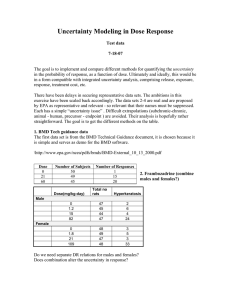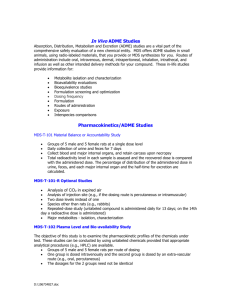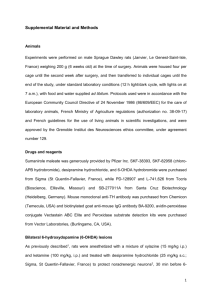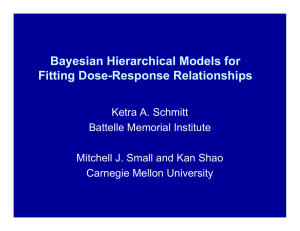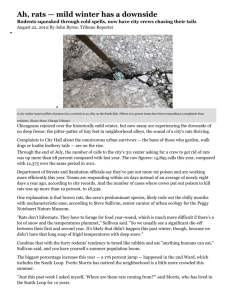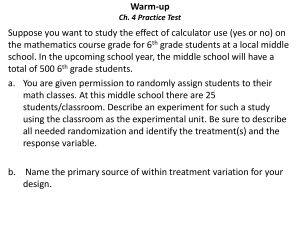Logistic regression in WinBUGS
advertisement
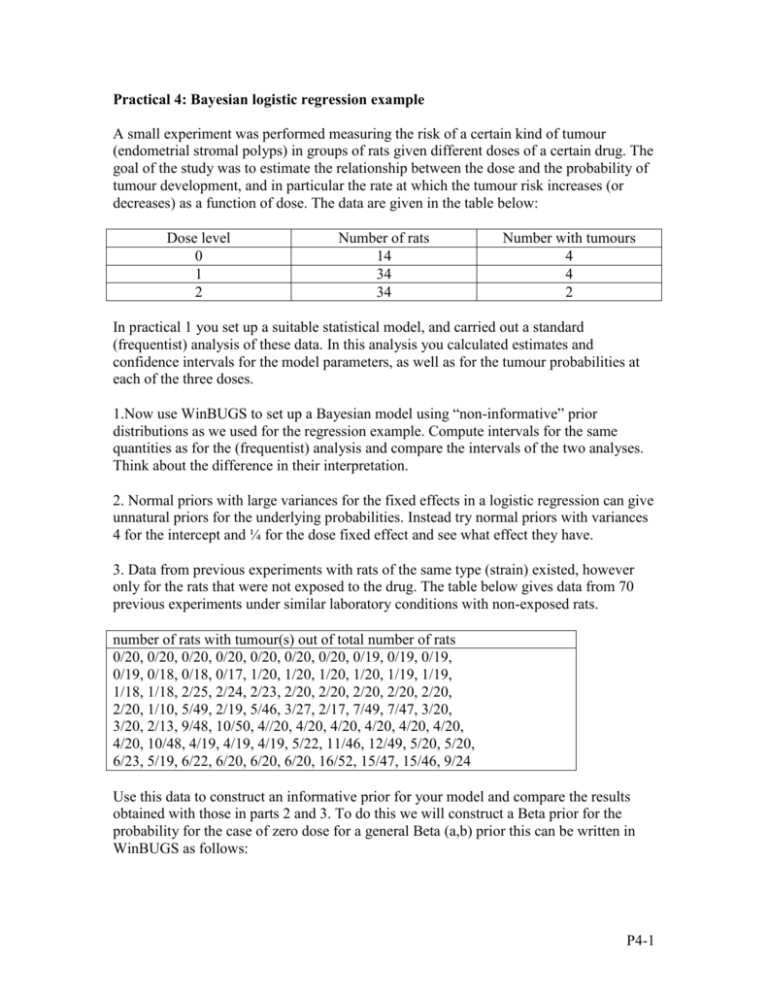
Practical 4: Bayesian logistic regression example A small experiment was performed measuring the risk of a certain kind of tumour (endometrial stromal polyps) in groups of rats given different doses of a certain drug. The goal of the study was to estimate the relationship between the dose and the probability of tumour development, and in particular the rate at which the tumour risk increases (or decreases) as a function of dose. The data are given in the table below: Dose level 0 1 2 Number of rats 14 34 34 Number with tumours 4 4 2 In practical 1 you set up a suitable statistical model, and carried out a standard (frequentist) analysis of these data. In this analysis you calculated estimates and confidence intervals for the model parameters, as well as for the tumour probabilities at each of the three doses. 1.Now use WinBUGS to set up a Bayesian model using “non-informative” prior distributions as we used for the regression example. Compute intervals for the same quantities as for the (frequentist) analysis and compare the intervals of the two analyses. Think about the difference in their interpretation. 2. Normal priors with large variances for the fixed effects in a logistic regression can give unnatural priors for the underlying probabilities. Instead try normal priors with variances 4 for the intercept and ¼ for the dose fixed effect and see what effect they have. 3. Data from previous experiments with rats of the same type (strain) existed, however only for the rats that were not exposed to the drug. The table below gives data from 70 previous experiments under similar laboratory conditions with non-exposed rats. number of rats with tumour(s) out of total number of rats 0/20, 0/20, 0/20, 0/20, 0/20, 0/20, 0/20, 0/19, 0/19, 0/19, 0/19, 0/18, 0/18, 0/17, 1/20, 1/20, 1/20, 1/20, 1/19, 1/19, 1/18, 1/18, 2/25, 2/24, 2/23, 2/20, 2/20, 2/20, 2/20, 2/20, 2/20, 1/10, 5/49, 2/19, 5/46, 3/27, 2/17, 7/49, 7/47, 3/20, 3/20, 2/13, 9/48, 10/50, 4//20, 4/20, 4/20, 4/20, 4/20, 4/20, 4/20, 10/48, 4/19, 4/19, 4/19, 5/22, 11/46, 12/49, 5/20, 5/20, 6/23, 5/19, 6/22, 6/20, 6/20, 6/20, 16/52, 15/47, 15/46, 9/24 Use this data to construct an informative prior for your model and compare the results obtained with those in parts 2 and 3. To do this we will construct a Beta prior for the probability for the case of zero dose for a general Beta (a,b) prior this can be written in WinBUGS as follows: P4-1 p0 ~ dbeta(a,b) beta0 <- logit(p0) Consider the following two approaches to construct values for a and b a) Ignore the fact that the results are from many different experiments and are therefore subject to clustering and combine the data into a Beta(x+1,n-x+1) prior where x is the total number of positives and n is the total number of animals. Note this would only really be sensible if the prior data came from a single experiment. b) Calculate the proportion positive in each experiment and then calculate the mean and variance of these proportions. Given the formulae for the mean and variance of a Beta distribution we can construct the values of a and b from the sample data by matching means and variances This gives us the formulae a=m([m(1-m)/v]-1), b=a(1-m)/m Note if you do not have time to evaluate the mean and variance then these take values 0.136 and 0.01071 respectively. P4-2
